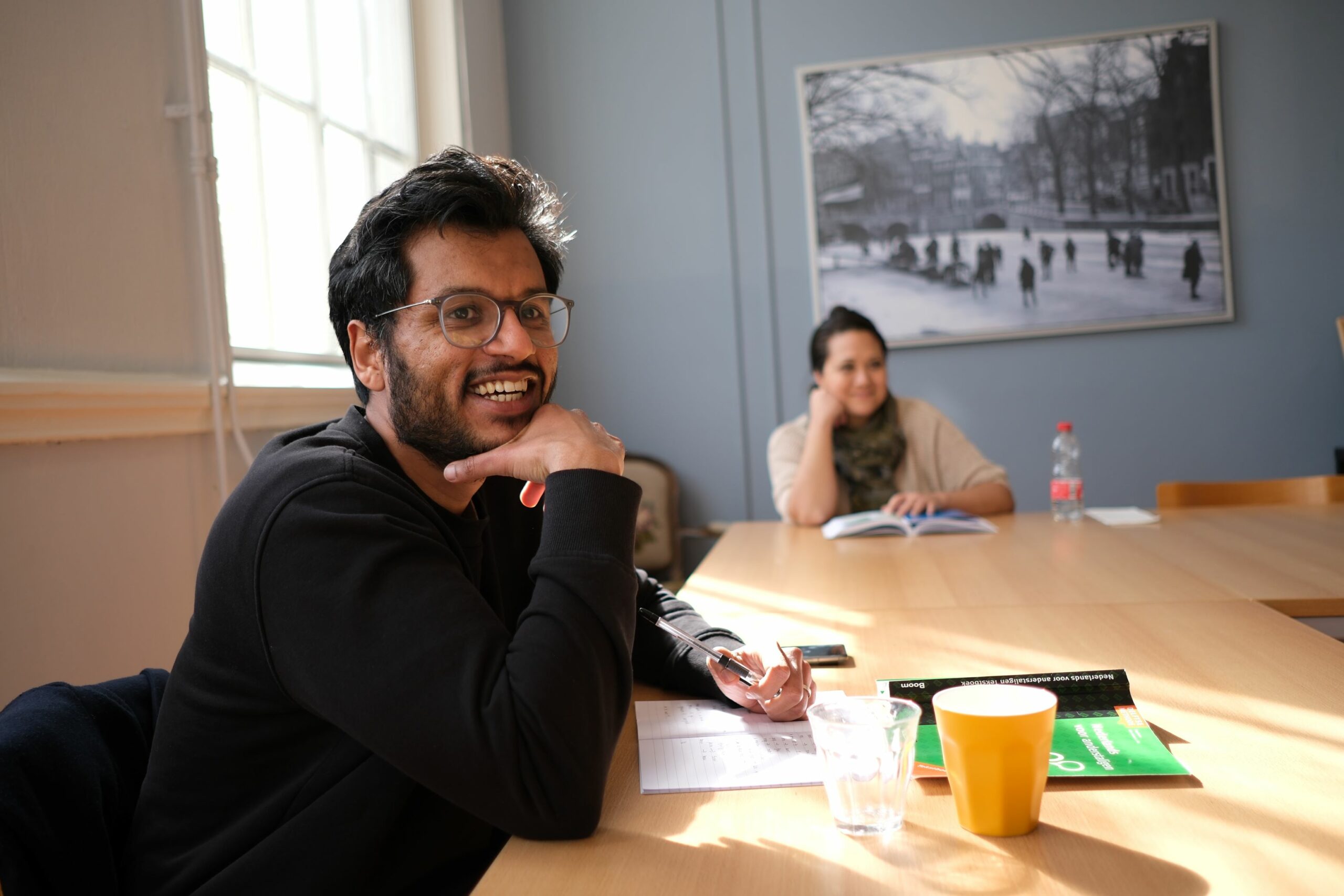“Sometimes, PostNL leaves the post outside...
in the rain,” says Jozef, slowly piecing together a sentence in Dutch. “ Hé, dat verbaast me !” replies Lobke, acting surprised. This 40-year-old Dutch woman is not necessarily astounded by the failings of the Dutch postal service.

She is teaching her class of seven students via the Delft method , which stresses learning how to speak simple sentences by trial and repetition rather than endless grammar. So this bright NedLes office around the corner from the Oosterpark in Amsterdam is full of the most Dutch of expressions for an hour, while English is banned. When one student says he needs new clothes twice a month, the lighthearted response from the others is already uber-Dutch: “ Dat is niet normaal! ” (That’s not normal behaviour!”).
What is most striking is the way Lobke teases out responses from everyone, testing whether they have really absorbed an example text about Fred picking up a delivery from a neighbour. It’s also remarkable how the students help one another to piece together halting sentences in what they all agree is truly a “strange language”. After just a week of lessons, for two hours a day, they are clearly understandable.
Excitement This clear progress is the joy of a practical teaching method created at Delft University of Technology 40 years ago, says Renske Berns, co-owner of NedLes and one of the teachers herself. “We have very positive feedback,” she says. “Very often, people ar.
















